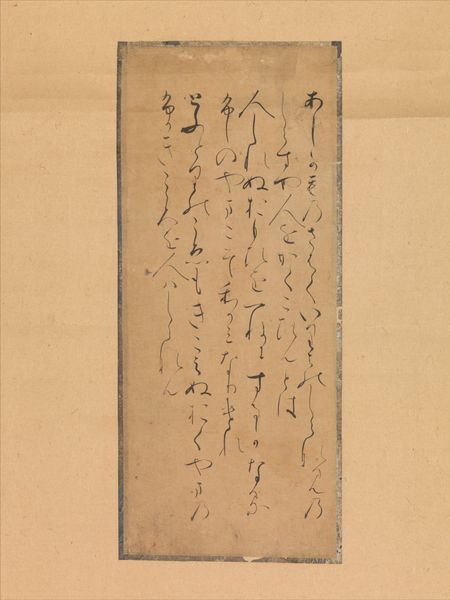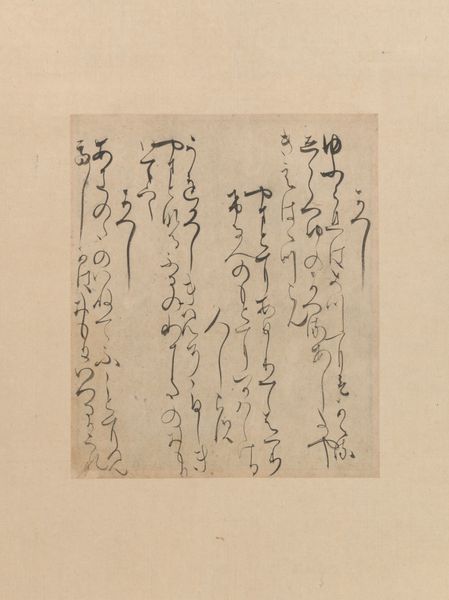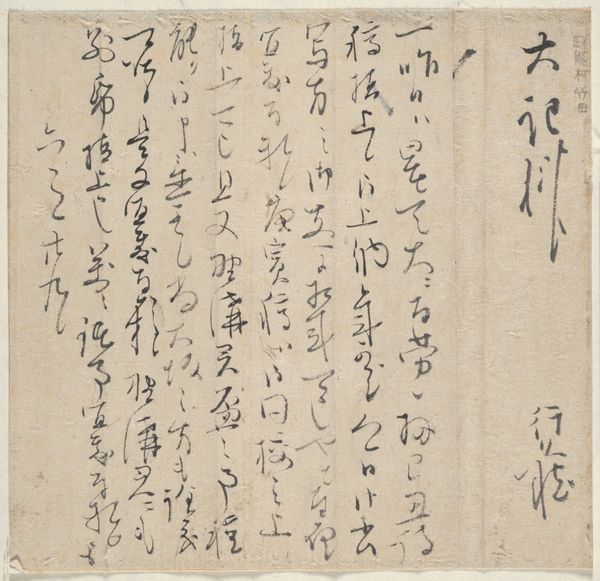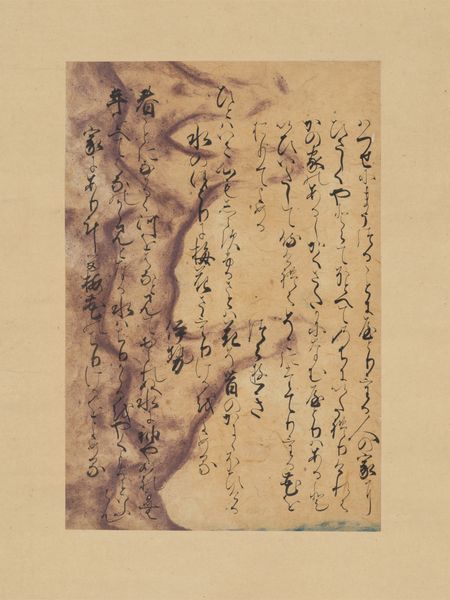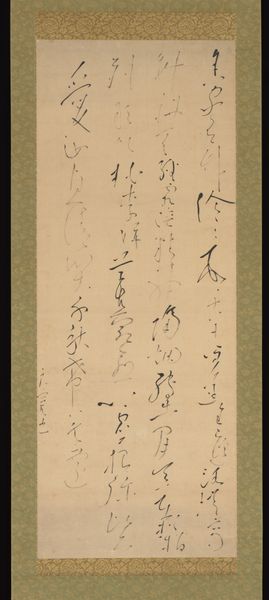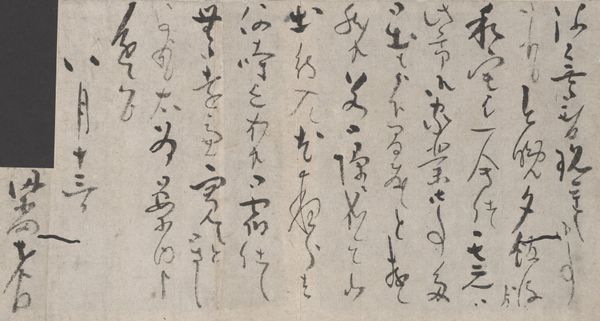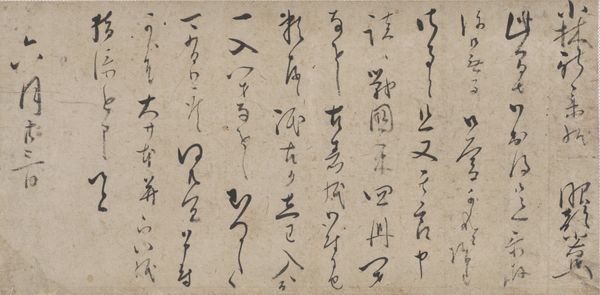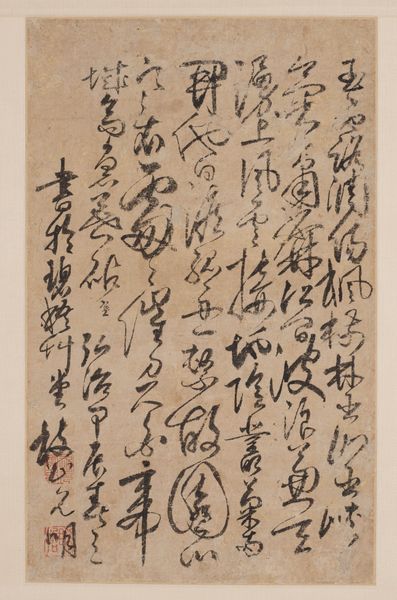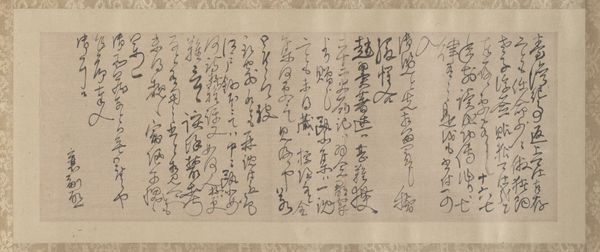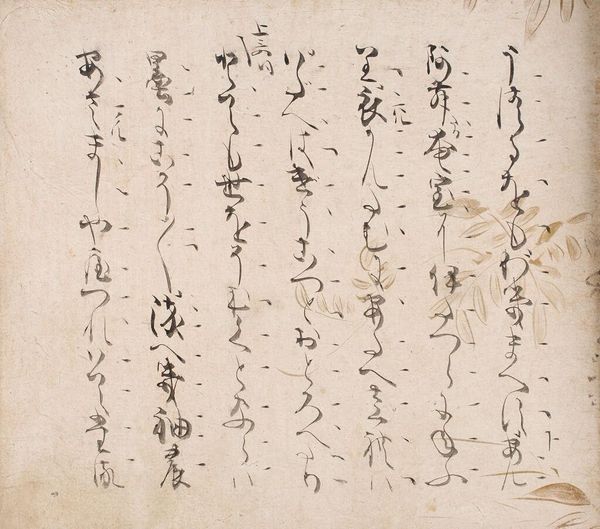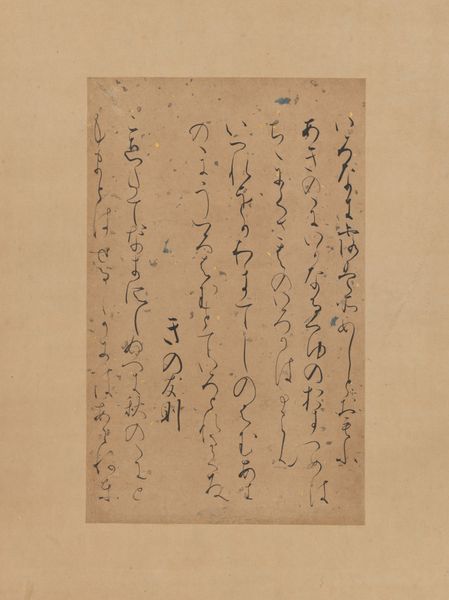
Page from the Illustrations and Explanations of the Three Jewels (Sanbō ekotoba), known as the Tōdaiji Fragment (Tōdaiji-gire) 1120
0:00
0:00
#
photo of handprinted image
#
toned paper
#
water colours
#
ink paper printed
#
asian-art
#
white palette
#
japan
#
underpainting
#
watercolour bleed
#
imprinted textile
#
mixed medium
#
watercolor
#
calligraphy
Dimensions: Image: 9 1/2 x 5 3/8 in. (24.1 x 13.7 cm)
Copyright: Public Domain
Editor: Here we have a page from the *Illustrations and Explanations of the Three Jewels*, or *Sanbō ekotoba*, dated to around 1120. It's also known as the *Tōdaiji Fragment* and currently resides at the Met. It seems to be ink on paper, a work of calligraphy. There's a real sense of quiet contemplation emanating from it, despite the fact I cannot read the script. What do you see in this piece? Curator: What immediately strikes me is not just the aesthetic beauty of the calligraphy but its position within a larger socio-political framework. We must consider the cultural significance of the *Sanbō ekotoba* at this moment in Japanese history. Think about the intersection of Buddhism, aristocratic patronage, and the development of a unique Japanese writing system. How did religious texts reinforce or challenge existing power structures? Editor: That's a perspective I hadn't considered. I was mostly drawn to the visual elements. But you're saying the text itself played a role in shaping society? Curator: Absolutely. And who had access to this knowledge? Calligraphy was not merely an artistic pursuit. It was intertwined with power, education, and religious authority. Consider the gender dynamics as well – were women afforded the same opportunities to engage with these texts? Editor: So, it's less about simply admiring the beautiful script and more about understanding who controlled that script, who was excluded, and what that meant for the broader social order. Curator: Precisely. This fragment provides a window into a complex network of cultural, religious, and political forces at play in 12th-century Japan. Seeing it through that lens truly enriches our understanding. Editor: That really changes my perspective. I'm starting to appreciate how art can be a reflection of so much more than just artistic skill. Curator: Indeed. It's a dialogue with history itself.
Comments
No comments
Be the first to comment and join the conversation on the ultimate creative platform.
